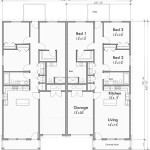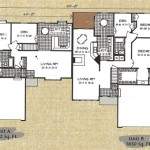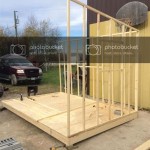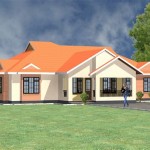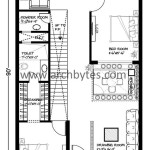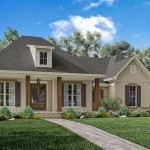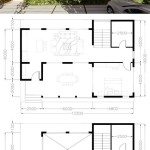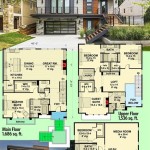Traditional Victorian House Plans: A Guide to Architectural Elegance
Victorian architecture, spanning the reign of Queen Victoria from 1837 to 1901, remains a popular choice for homeowners seeking a blend of historical charm and intricate detail. This enduring appeal stems from the distinctive features and diverse styles that emerged throughout the era, offering a rich tapestry of architectural expression. Understanding the key characteristics of traditional Victorian house plans allows for informed decision-making when selecting a design for a new home or renovating an existing structure.
One of the most recognizable features of Victorian homes is their complex and elaborate ornamentation. Decorative trim, gingerbread detailing, and ornate brackets adorn eaves, porches, and gables. These embellishments contribute to the visual richness and unique character of these homes. Bay windows, turrets, and dormers further enhance the exterior, creating dynamic shapes and adding architectural interest.
Asymmetrical facades are another defining element of traditional Victorian architecture. Unlike earlier architectural styles that emphasized symmetry, Victorian homes often feature unbalanced designs with varying rooflines, window placements, and porch configurations. This asymmetry lends a sense of movement and visual complexity to the structure.
Steeply pitched roofs, often featuring complex angles and cross-gables, are a common sight on Victorian homes. These roofs not only contribute to the distinctive silhouette but also served a practical purpose in the era before modern heating and cooling systems, providing ample attic space for ventilation and insulation.
Porches play a significant role in Victorian architecture, serving as transitional spaces between the indoors and outdoors. Wrap-around porches, often featuring intricate latticework and decorative columns, are particularly characteristic of the style. These porches provided a sheltered area for socializing and enjoying the surrounding landscape.
Stained glass windows, a hallmark of the era, add a touch of elegance and artistry to Victorian homes. Intricate patterns and vibrant colors, often depicting floral motifs or geometric designs, create a stunning visual effect while also filtering light into the interior spaces.
High ceilings are a defining characteristic of Victorian interiors, contributing to a sense of grandeur and spaciousness. These high ceilings also allowed for the incorporation of elaborate ceiling medallions, cornices, and other decorative elements.
Within the broad category of Victorian architecture, several distinct styles emerged, each with its unique characteristics. These include the Gothic Revival, Italianate, Queen Anne, Second Empire, and Stick Style. Understanding the nuances of each style can help homeowners select a plan that aligns with their aesthetic preferences.
Gothic Revival homes draw inspiration from medieval Gothic architecture, featuring pointed arches, decorative bargeboards, and steeply pitched roofs. Italianate style homes emphasize symmetry and balance, often incorporating low-pitched roofs, wide eaves with decorative brackets, and tall, narrow windows.
Queen Anne architecture is characterized by its asymmetry, turrets, and abundance of decorative details. Second Empire homes are distinguished by their mansard roofs, while Stick Style homes feature intricate wooden trim that resembles stickwork.
When considering traditional Victorian house plans, careful attention should be given to the size and layout of the home. Victorian homes were often designed with specific rooms for specific purposes, such as parlors for formal entertaining and separate dining rooms. Modern homeowners may choose to adapt these traditional layouts to suit contemporary lifestyles.
Selecting appropriate building materials is crucial for achieving the desired aesthetic. Traditional Victorian homes often utilized wood siding, brick, and stone. Modern construction techniques may incorporate these materials while also utilizing contemporary materials for improved energy efficiency and durability.
Adapting traditional Victorian house plans for modern living often involves updating the kitchen and bathrooms. While preserving the historical character of the home, these spaces can be modernized with contemporary fixtures and appliances to meet the needs of present-day homeowners.
Landscaping plays an important role in complementing the architecture of a Victorian home. Traditional Victorian gardens often featured a mix of formal and informal plantings, incorporating colorful flowers, shrubs, and trees. Modern landscaping designs can draw inspiration from these traditional elements while also incorporating sustainable practices.
Careful consideration of these various aspects of traditional Victorian house plans allows for the creation of a home that blends the timeless elegance of the Victorian era with the comforts and conveniences of modern living. Researching different styles, understanding the key features, and working with experienced architects and builders are essential steps in realizing the dream of owning a Victorian-inspired home.

House Plan 90362 Victorian Style With 566 Sq Ft 1 Bed Bath
Victorian House Plans Home Design Gml D 756 19255

Victorian House Plans

House Plan 48190 Victorian Style With 874 Sq Ft 2 Bed 1 Bath

Floor Plans Of A Working Class Victorian House

59 Best Victorian House Floor Plans Ideas Vintage

Victorian House Plans And Small Cottage Designs

Home Plan Carrington Sater Design Collection

1900s Farmhouse Plans Victorian House Floor Sears

House Plan 48139 Victorian Style With 1023 Sq Ft 3 Bed 1 Bath

